Introduction to top 50 Rabbit farming tips: Rabbit farming is not only profitable but also enjoyable. One can raise a rabbit as a pet and grow it in a small land without much investment. Rabbits have been reared in our country for a long time. There are many benefits to commercial rabbit farming. Rabbit is a beautiful and small animal. They are tender and therefore a good source of meat. Rabbit farming is relatively simple, profitable, and takes up less space than other livestock activities. It can provide a very valuable additional source of income in rural areas. Here, we mentioned the top 50 tips to start rabbit farming.
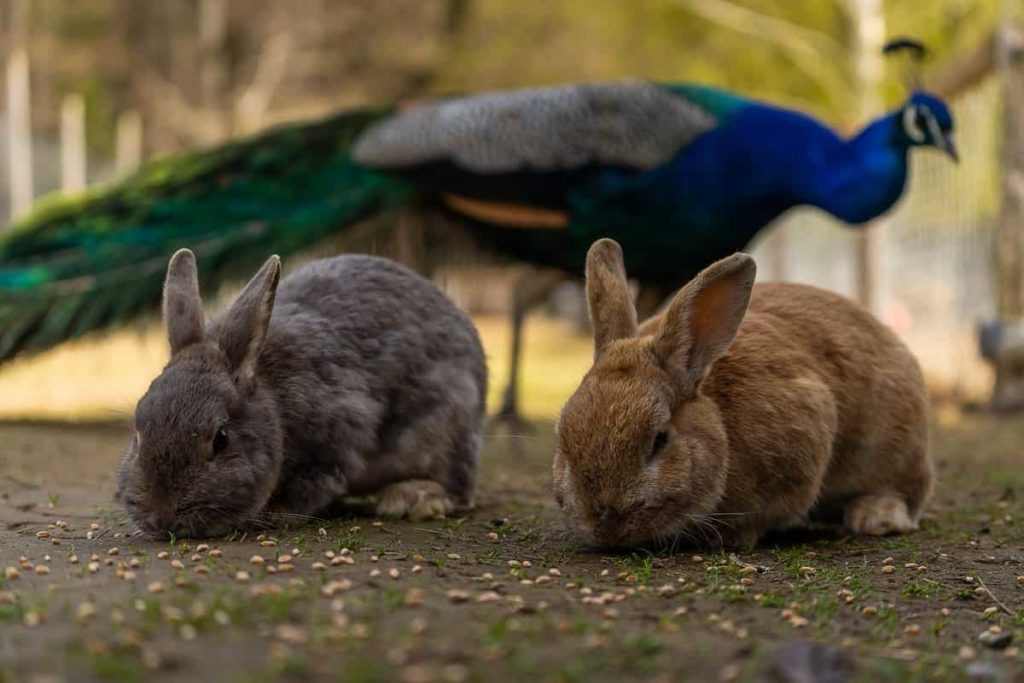
- Rabbit farming is also known as cuniculture. It is defined as raising domestic rabbits for their meat, fur, or wool as livestock. Rabbit farming is practiced by scientists in science as model biology in the use and management of rabbits.
- Rabbit farming is easier and more profitable than other animal farming because it requires very little capital with a small space to start, and it is a very profitable animal. Depending on the climate, location, and size of the farm, housing plays an important role in Rabbit farming.
- Water availability – Freshwater rabbits need more water. Cages need water to wash and clean. The snake, woodpeckers, and dogs are enemies of rabbits.
Guide on top 50 Rabbit farming tips, climate tips, choose the right Rabbit cage, Rabbit breeds, Rabbit farming methods, how to feed and marketing tips
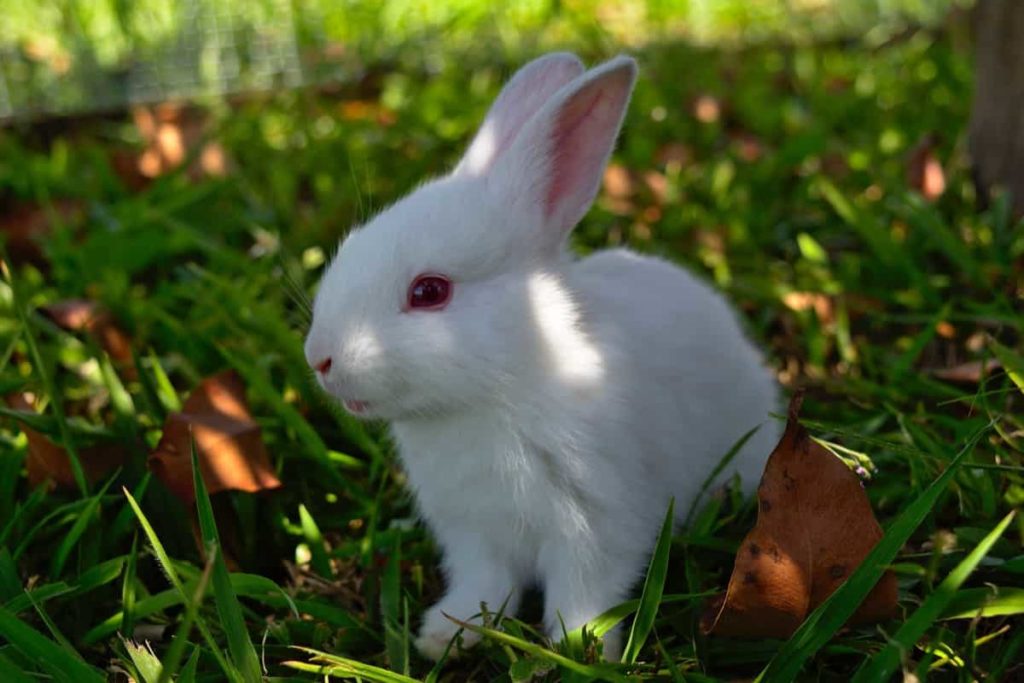
Climate and housing tips
- Cold weather is perfect for rabbits. Excessive air humidity can make rabbits sick. The cage should have good feeding and watering facilities.
- Housing should be an attached building with adequate ventilation, lighting, heating, and cooling systems. Heating and ventilation are important because rabbits do not tolerate extremes of temperature. You should maintain a 12-hour herd in light and dark each year to maintain a year-round rabbit breeding.
- For rabbit farming, ensure proper supply of clean water, electricity, supply of breeding stock, feed, fodder, veterinary aid, and proximity to the market for the sale of wool and meat.
- Hutch system can be adopted for small size rabbit farms which is a self-made cage low nest box with its roof.
- In the case of large farms, the cages inside the sheds can be arranged in single or double tires under a hanging or stepwise rack system. Provide adequate space for each rabbit floor.
- The rabbit roof should preferably be made of asbestos, wood, chaff, or other locally available cheap materials. Build the shed so that birds of prey and birds do not enter the shed. In the case of open huts, adequate fencing should be provided to protect the rabbits from their predators. Build rat-proof civil structures to store feed and wool.
- To keep it free from flies/mosquitoes, keep the shed/pan clean by regular cleaning and disinfection and a foot dip should be arranged at the entrance of the shed.
- Rabbit cages should be cleaned regularly, especially sterile before kindling. The cage/hutch nest box should be kept clean during burning so that the cats do not catch diseases like coccidia.
- Feeders and waterers should be cleaned regularly and mash feed should be removed from the feeder which can be used for feeding other animal species.
Keep some important things in mind for Rabbit cages
- Multiple Compartments – A rabbit needs a well-sized hutch or cage, preferably with two chambers.
- Material for the cage – The cage should be made of steel and wood. It will be more useful if you make a cage out of wood.
- Playing space – If you promote them commercially, at least running / exercise space should be considered (worth three hops). This is important and guarantees a healthy pet.
- Maintaining these cages is as important as getting the perfect cage. Good care increases productivity reduces disease, promotes good health, and is directly linked to more successful rabbit farms.
- You should keep Does and Bucks in separate pens and only keep them together throughout the growing season. Keep the hutch in a sunny place and let in the fresh air. Provide nest boxes on time for breeding.
In case if you miss this: Top 50 Sheep Farming Tips, Ideas, and Techniques
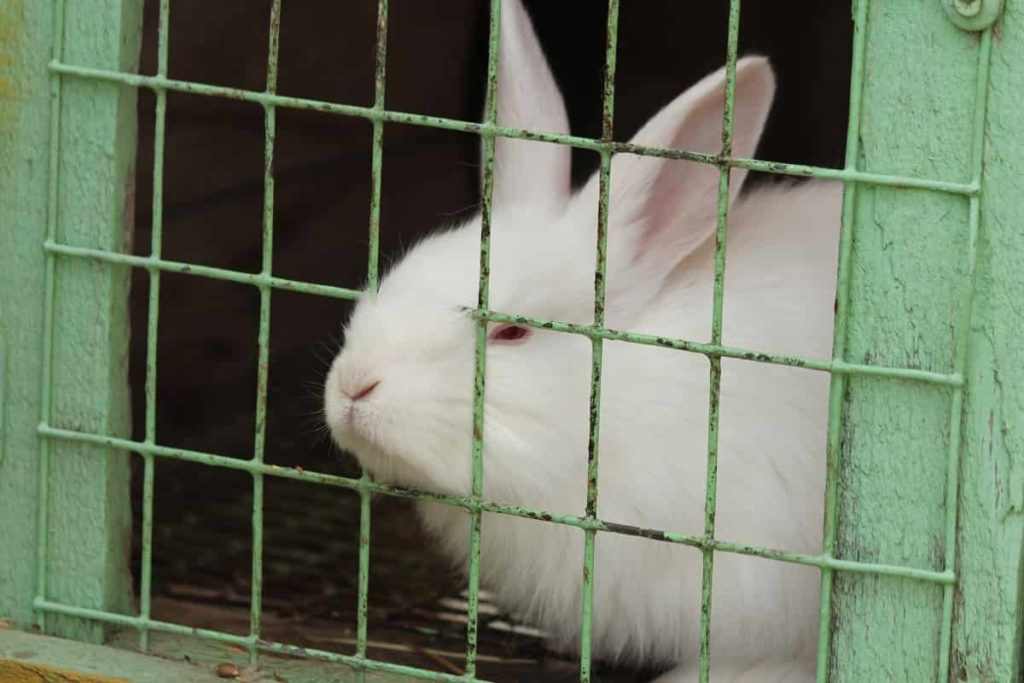
Tips to choose the right rabbit cage and hutch
There are three main things to consider when buying a rabbit hutch or cage;
- The size of the rabbit cage or hutch – There is never a rabbit that is too big for your rabbit. Experts recommend that the length of a rabbit hutch or rabbit cage be at least four times the length of a rabbit. But, don’t forget that your rabbit will grow in size, especially if you are buying a newborn rabbit. You need space for your rabbits to grow and a place for them to run and spread, as well as a place to hide.
- Your rabbit needs these exercises to stay fit and healthy. Rabbits that lack exercise have health problems. You need to make room for a water bottle, feeder, litter box as well as some toys to keep your rabbits from getting bored. So, always choose the biggest rabbit hutch that works for you – the one that you can afford and the one that will fit where you need it. Remember that your rabbit is usually happier when he has a suitable place in the house.
- The type of rabbit cage or hutch – You have the choice of the indoor or outdoor rabbit cage. Due to indoor climate control, rabbits are generally safer and more comfortable indoors.
- Keeping rabbits indoors also helps you connect with your rabbits because if they are close you are more likely to communicate with them. It also helps rabbits stay in touch with people regularly and socialize with people. Consider having a large outdoor rabbit hutch for mild weather. With it, you can let your rabbits enjoy fresh air, sunshine, and lots of exercises, and run in the backyard to keep them safe from predators and prevent them from getting lost.
- Design and materials used – Rabbit cages and modern rabbit hutches are made of metal, plastic, or wood. The materials used are very important, keeping in mind that you need to clean your rabbit hutches regularly. Recommend metal, stainless steel, or plastic because they are easier to wash than wood. Also, find a hutch design that allows easy access with multiple openings and doors that allow you to access all parts of the hutch – for ease of cleaning.
Tips for selecting Rabbit breeds
- The most important breeds are White Giant, Grey Giant, Flemish Giant, New Zealand White, New Zealand Red, Californian, Dutch, and Soviet Chinchilla.
- Rabbit rearing is primarily for meat and skin. The diet of rabbits should include Green Leafy Vegetables, Carrots, Cabbage, Peas, and Spinach, etc.
- Breeds of meat Rabbits – The best breeds of meat are New Zealand White, Giant Chinchilla, California, and Champagne de Argent.
- Raise Fiber Rabbits – If you want to raise rabbits but don’t want to cut them for meat, you can raise fiber rabbits. Natural fibers are very popular and you can make beautiful profits without harming your rabbit. You can sell wool as it is washed, carded, or spun. Then, the more value you add to the fiber, the more profit you will see.
- The four most popular breeds of fiber are English Angora, French Angora, Giant Angora, and Satin Angora.
In case if you miss this: Top 50 Herb Farming Tips, Ideas, and Techniques
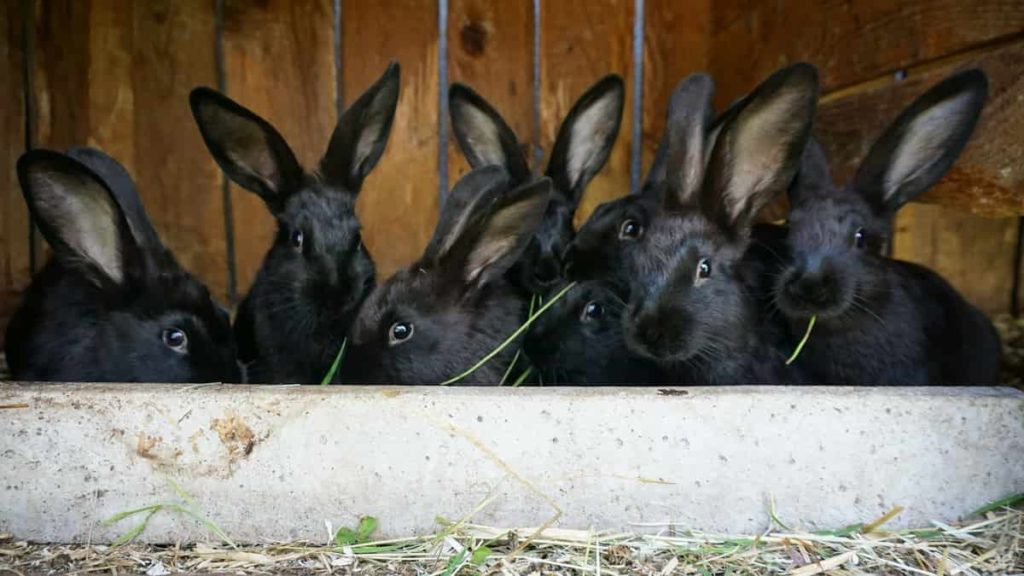
Rabbit farming methods
- Rabbits can be reared in either of the 2 systems. They are the deep litter system or the cage system. Proper shelter is essential to protect rabbits from heat, rain, and cold, as well as from predators such as cats and dogs. Sheds can be made in the backyard with very little investment.
What to feed and how to feed your Rabbits
- One of the most important things is to feed the rabbit. Rabbits like to eat pellets, fresh vegetables, and hay. The best foods to promote healthy nutrition are hay, green grass, and vegetables, fruits, pellets (at least 18% fiber). However, bread, avocado, chocolate, biscuits, potatoes, and rice are not provided with these feeds.
- Generally, within 5 to 6 months of age, rabbits mature and become suitable for breeding purposes. But do not use male rabbits for breeding purposes before their first birthday. This will ensure the commercial production of quality young rabbits.
- Try to use good rabbits for breeding often, with enough body weight. If women are sick, do not raise them. Take special care to provide good food for breeding males and pregnant females. The gestation period for rabbits is about 28 to 31 days. And one dove can give birth to 2 to 8 children at a time.
- Farm Rabbit Feed – Farm rabbits should be fed nutritious food for proper growth and good health. Cereals, beans, and green fodder such as Lucerne, Agathi, Desmanthus, and kitchen waste such as carrot and cabbage leaves can be fed. Some concentrate feed should also be fed. For a 1 kg body weight of a rabbit, about 40 grams of concentrated food and 40 grams of green fodder as well as clean and fresh drinking water are desperately needed.
- High quality and nutritious food – Generally rabbits can eat all kinds of grains, beans, and green fodder such as Lucerne, Agathi, Desmanthus, and various kitchen wastes including carrots, cabbage leaves, and other vegetable wastes.
- When feeding rabbits, a concentrated diet, try to give them some green food. You can give them about 40 grams of concentrate food and 40 grams of green food for rabbits weighing 1 kg. Rabbits are suitable for breeding at the age of 5 to 6 months. Male rabbits should be used for breeding at the age of one year to obtain standard young rabbits. Always use healthy rabbits for breeding with appropriate age and body weight. Animals should well care for better production. Diseases are less common in rabbits.
In case if you miss this: Top 50 Dairy Farming Tips, Ideas, and Techniques
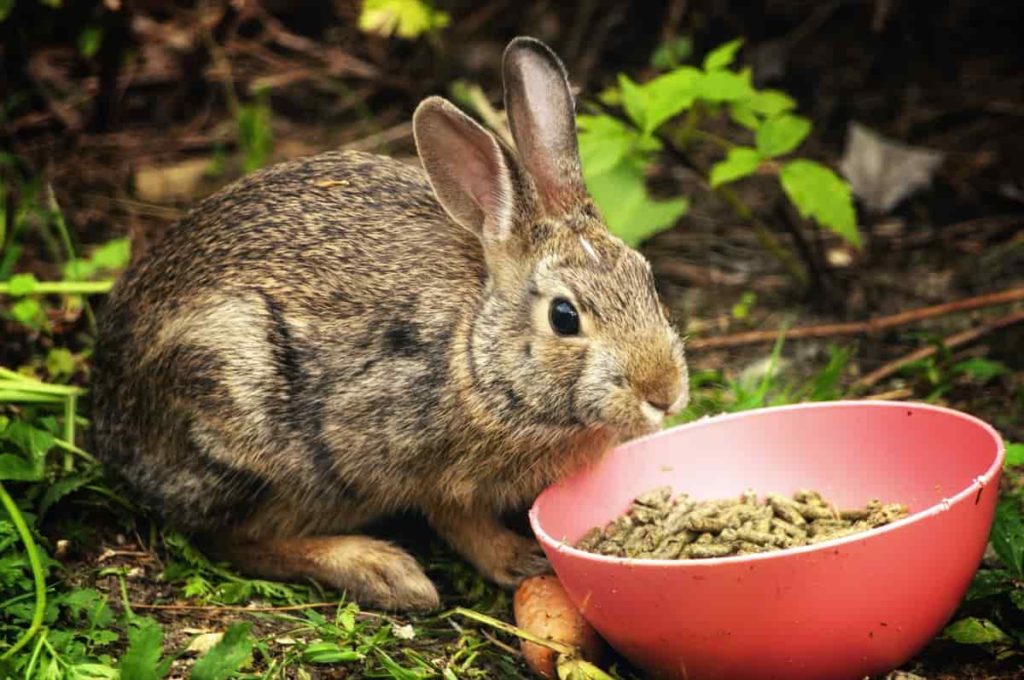
Watering tips for Rabbit farming
- Water should be available 24 hours a day, especially for lactating doe.
- Always provide fresh and clean drinking water. Always keep water containers clean and remove sediments daily. Water containers should be thoroughly cleaned every week.
- Properly designed automatic watering devices can also be used.
- Rabbits need fresh water every day and a rabbit’s diet is not complete without fresh water.
- You need to change your rabbit’s drinking water daily to prevent bacterial growth. Always remember that rabbits are easily dehydrated. Provide them with clean water daily using a water container that works best for them.
Mating and calving of rabbits
- Mating can occur at the age of 6-8 months. The female rabbit is mixed in the male rabbit’s cage. If the male rabbit is kept in the cage of the female rabbit, the female rabbit which does not want to share the nest can attack the male rabbit and kill them. Male rabbits can be used for mixing 3-4 times a week. The gestation period of rabbits after mating is 28 to 32 days. If she is pregnant, we can start preparing the delivery room with grass from the 23rd day. On the 28th day, a specially prepared box should be kept in the cage for delivery.
- The cage should be built together at the bottom so that it fits in the cage and a piece of wood with an inch height around the sides. Rabbits make their bed from the fur inside the box and give birth in it. Babies are often born at night. Delivery will be in half an hour. There are seven to ten children in a litter. The mother rabbit licks the babies, cleans them, and feeds them quickly. Children do not have hair. Mother rabbits can be breastfed for 25 days. Breastfeeding is done at night and when there is no guest. Mother rabbits eat their babies as soon as they are born. It should be more careful.
Health management tips in Rabbit farming
- Cleanliness, good ventilation, and protection from the sun and rain are the factors important in maintaining a healthy rabbit herd. Rabbits suffer from some diseases that can reduce production to unprofitable levels. Respiratory disease caused by Pasturella multocida is responsible for reduced productivity and high mortality in does. Pasturella-free animals can be purchased and can be a good investment.
- To help prevent disease problems, do not allow comfortable visitors inside the rabbit. They can introduce the disease and cause additional stress to the animals. Separate any sick or injured rabbits immediately. Disinfect isolated cages and regular rabbit cages to prevent the spread of disease. For a good health program, you need to keep accurate records of each animal.
- It is very important to keep the environment clean as always as there are common diseases and health conditions that can easily affect rabbits. Some of the diseases that attack rabbits are coccidial infections, particle and lice infections, and other viral and bacterial infections. And when the environment is not clean or contaminated food is fed, they are easily attacked. Therefore, it is important to disinfect and wash their environment thoroughly to keep it clean and dry at all times. A clean environment is an important tool in preventing diseases that attack rabbits.
In case if you miss this: Top 50 Goat Farming Tips, Ideas, and Techniques
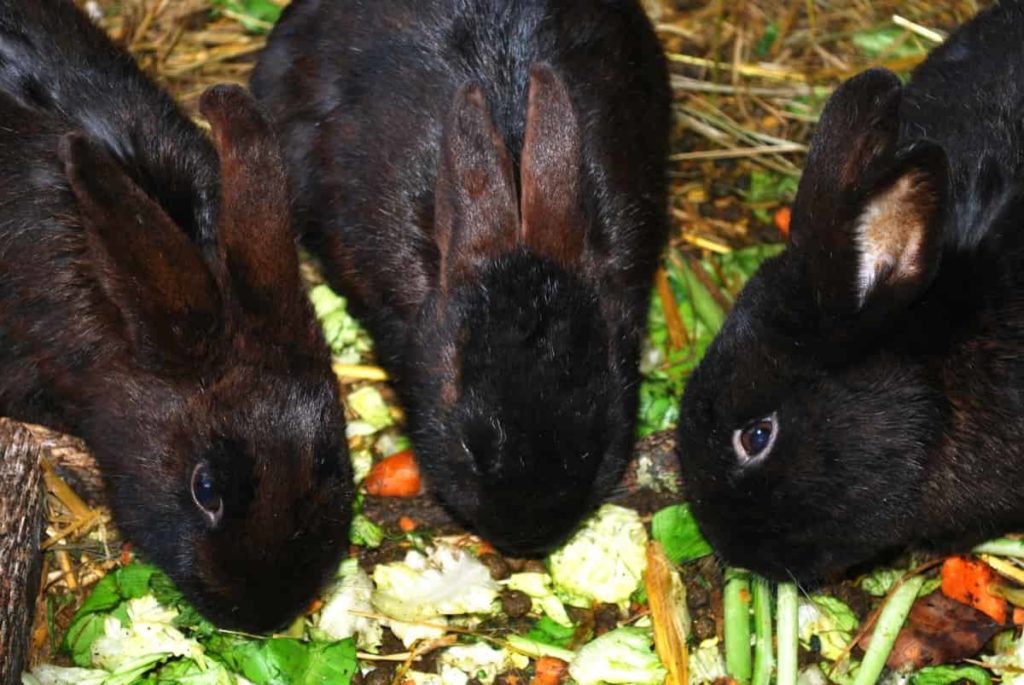
Disease prevention/control tips in Rabbit farming
- Rabbit cages, sheds and equipment, a balanced diet, and freshwater hygiene conditions are essential to prevent the possibility of infection.
- Rabbits should be prevented from coming into contact with feces. Overcrowding should be avoided.
- Proper ventilation should be provided. Flies that can act as carriers of infection should be controlled in rabbits.
- To prevent the spread of diseases, burn dead sick rabbits together. Nest box bed should be burned after use. Dead animals should be buried immediately after post mortem (if required).
Marketing tips
- Marketing rabbit products is not easy in some areas. So, it would be better if you decide on your marketing plan before you start. Initially, you can try local markets or the nearest town.
- With proper care and management, you can make the most of your rabbit farming business. Always try to take good care of your Rabbits. Feed them quality nutritious food, keep their home clean, and buy healthy breeds to get started. This way you can make your rabbit farming business very profitable.
- Economical Aquaculture: A Guide to Low-Budget Fish Farming
- 15 Common Planting Errors That Can Doom Your Fruit Trees
- How to Make Houseplants Bushy: Effective Tips and Ideas
- Innovative Strategies for Boosting Coconut Pollination and Yield
- Pollination Strategies for Maximum Pumpkin Yield
- The Complete Guide to Chicken Fattening: Strategies for Maximum Growth
- Natural Solutions for Tulip Problems: 100% Effective Remedies for Leaf and Bulb-Related Issues
- Revolutionizing Citrus Preservation: Towards a Healthier, Greener Future
- Natural Solutions for Peony Leaf and Flower Problems: 100% Effective Remedies
- Maximizing Profits with Avocado Contract Farming in India: A Comprehensive Guide
- Natural Solutions for Hydrangea Problems: 100% Effective Remedies for Leaf and Flowers
- The Ultimate Guide to Choosing the Perfect Foliage Friend: Bringing Life Indoors
- From Sunlight to Sustainability: 15 Ways to Use Solar Technology in Agriculture
- The Ultimate Guide to Dong Tao Chicken: Exploring from History to Raising
- The Eco-Friendly Makeover: How to Convert Your Unused Swimming Pool into a Fish Pond
- Mastering the Art of Delaware Chicken Farming: Essentials for Healthy Backyard Flocks
- 20 Best Homemade Fertilizers for Money Plant: DIY Recipes and Application Methods
- How to Craft a Comprehensive Free-Range Chicken Farming Business Plan
- Brighten Your Flock: Raising Easter Egger Chickens for Beauty and Bounty
- How to Optimize Your Poultry Egg Farm Business Plan with These Strategies
- Subsidy for Spirulina Cultivation: How Indian Government Schemes Encouraging Spirulina Farmers
- Ultimate Guide to Raising Dominique Chickens: Breeding, Feeding, Egg-Production, and Care
- Mastering the Art of Raising Jersey Giant Chickens: Care, Feeding, and More
- Ultimate Guide to Raising Legbar Chickens: Breeding, Farming Practices, Diet, Egg-Production
- How to Raise Welsummer Chickens: A Comprehensive Guide for Beginners
- How to Protect Indoor Plants in Winter: A Comprehensive Guide
- Ultimate Guide to Grow Bag Gardening: Tips, Tricks, and Planting Ideas for Urban Gardeners
- Guide to Lotus Cultivation: How to Propagate, Plant, Grow, Care, Cost, and Profit
- Agriculture Drone Subsidy Scheme: Government Kisan Subsidy, License, and How to Apply Online
- Ultimate Guide to Raising Araucana Chickens: Breed Profile, Farming Economics, Diet, and Care
- Bringing Hydroponics to Classroom: Importance, Benefits of Learning for School Students
- Ultimate Guide to Raising Polish Chickens: Breed Profile, Farming Economics, Diet, and Care
- Ultimate Guide to Raising Australorp Chickens: Profile, Farming Economics, Egg Production, Diet, and Care
- Silkie Chicken Farming: Raising Practices, Varieties, Egg Production, Diet, and Care
- Sussex Chicken Farming: Raising Practices, Varieties, Egg Production, Diet and Care
- Homemade Feed Formulations for Livestock: Discover Cost-effective Starter to Finisher Feed Recipes
THANKS VERY MUCH FOR THE GOOD WORK TO ROGERS WELISHE.
How and where contact for comercial rabbit farming.50 nos